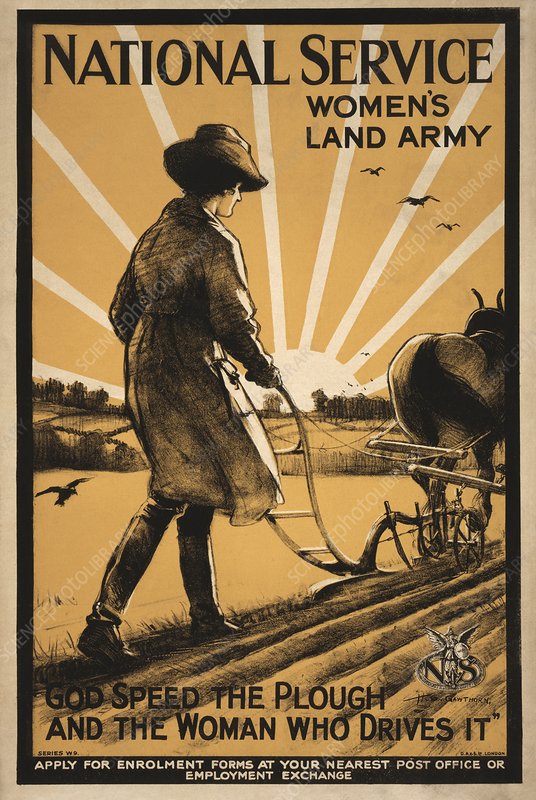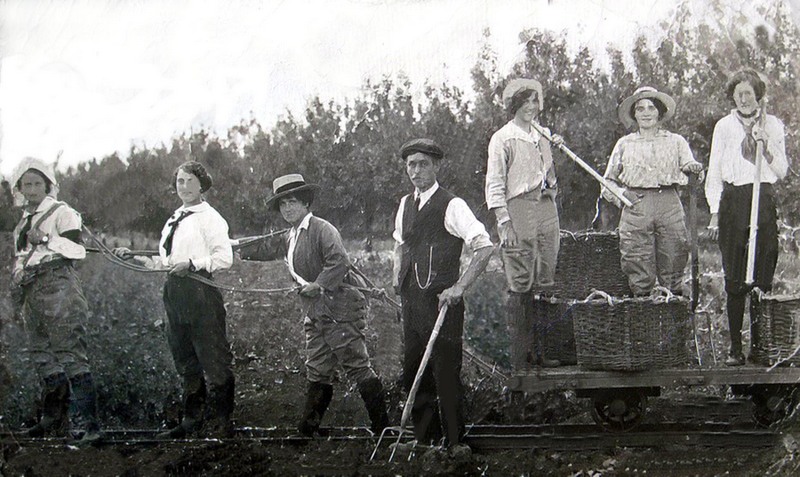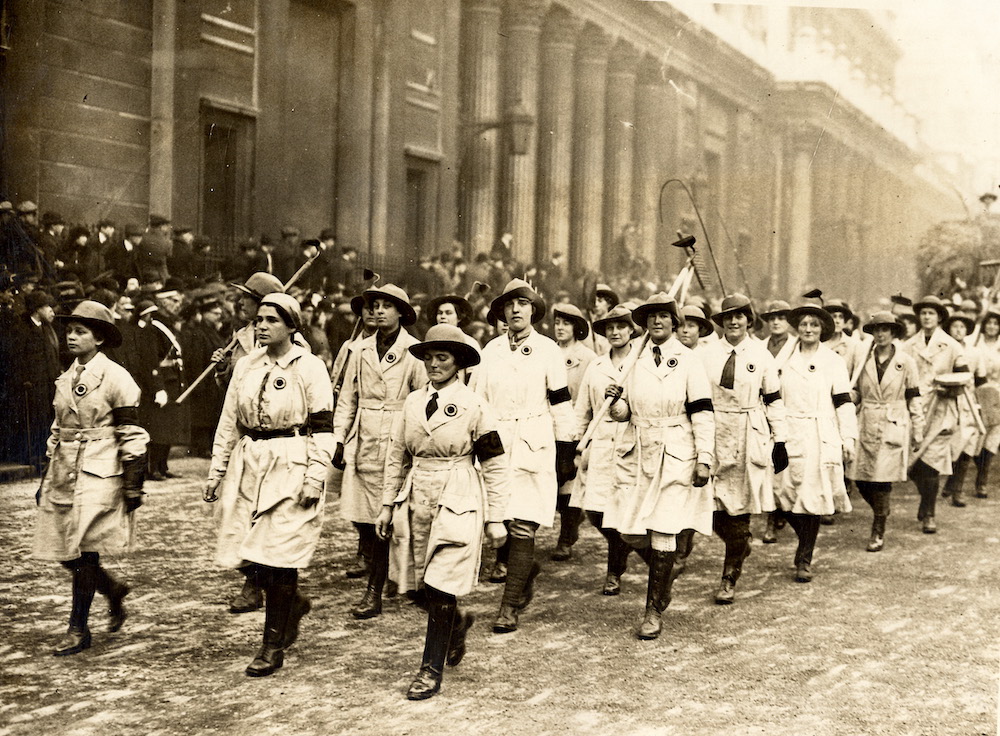When thinking of the Women’s Land Army, most people’s thoughts go to World War 2. In fact, there was also a similar organization in World War 1, when 23,000 women were recruited to work full-time, helping to replace male farmers and farmworkers who had gone to fight in the War.
By January 1915, over 100,000 British men who worked on the land had gone to war. Farmers were finding it hard to carry out their seasonal work and not enough food was being produced. A new Department of Food Production was formed and in January 1917 a Women’s Branch was established by the Ministry of Agriculture under a Director, Meriel Talbot. In March 1917, she established a civilian women’s labour force called the Women’s Land Army. The aim was to recruit and train women for four weeks and then channel them into farm work. The ‘land girls’, as they become known, took on milking, livestock care and general work on farms. They were paid 18/- a week, increasing to 20/- after they passed an efficiency test. By July 1917, 2,000 women had been placed on farms but, by May 1919, 23,000 had successfully passed through training centres.

The three sections to the Women’s Land Army
- Agriculture: By Autumn 1918, this section employed 12,649 members, the majority working as milkers and field workers.
- Forage: These were concerned with haymaking for food for horses. The Forage Corp had started in 1915, before becoming a section of the Women’s Land Army. By the end of 1919, 8,000 women worked in this section.
- Timber Cutting: The Women’s Forestry Corps had been set up in 1916, employing gangs of women in forestry work to boost timber production. By January 1919, as part of the Women’s Land Army, 400 women worked as foresters.
Military Tribunals
After the Military Service Act was passed by Parliament, on 27th January 1916, men of military age were conscripted into the armed services. Men had the right to appeal against their conscription and Tribunals were held to hear their cases.
The situation at Manor Farm, Wickhamford, was stated at a Tribunal in Evesham on 16th April 1916. George Lees-Milne, owner of Wickhamford Manor and its associated farm, appeared in an appeal for military exemption by one of his farm workers, George Higgins Hardiman. He said that, when war broke out, he had not tried to stop a single man on his staff from joining up. However, his staff was now very much smaller than formerly, and he supported Hardiman’s application for exemption. He was a married man, aged 34, and his managing foreman, looking after over 60 acres of land. At this hearing, Hardiman was only given temporary exemption until 1st October 1916. He may have been given further exemptions, as no military record has been found for this man.
Women’s Land Army at Wickhamford Manor Farm
A number of photographs exists of George Higgins Hardiman working on the farm associated with Wickhamford Manor. One is of particular interest for this topic.

At some point, a small railway track was laid in the grounds of Wickhamford Manor, to help with the movement of fruit and vegetables across the land. The track width appears, from the picture, to about 18” to 24”. Hardiman is in the middle of the photograph, with six women farm workers. Three are preparing to pull the truck on the rails and the other three are standing on the truck. These women are all dressed in high boots and breeches, typical of those working in the Women’s Land Army. Two or three of the them are wearing soft felt cloche hats, also part of the issue of clothing to the women. The woman on the left is wearing an issued armband, like those seen in the picture of the parade of women at the end of the article.
In the photograph below, local women, in dresses, were more typical of those working on the land at that time – the wives and daughters of farm workers helping out at harvest time. The lady second from the right is Hardiman’s wife, Emily Jane.

The end of the Women’s Land Army
The end of the War in November 1918 and the return of men from the armed services back to working on the land, led to the disbandment of the Woman’s Land Army in November 1919.

Tom Locke, August 2024
Acknowledgements
- The two photographs of land workers in Wickhamford were kindly lent by Sarah Burton, which Peter Stewart helped prepare for the article.
- The general information on the Women’s Land Army in World War 1 has come from this website - https://www.womenslandarmy.co.uk/world-war-one/
